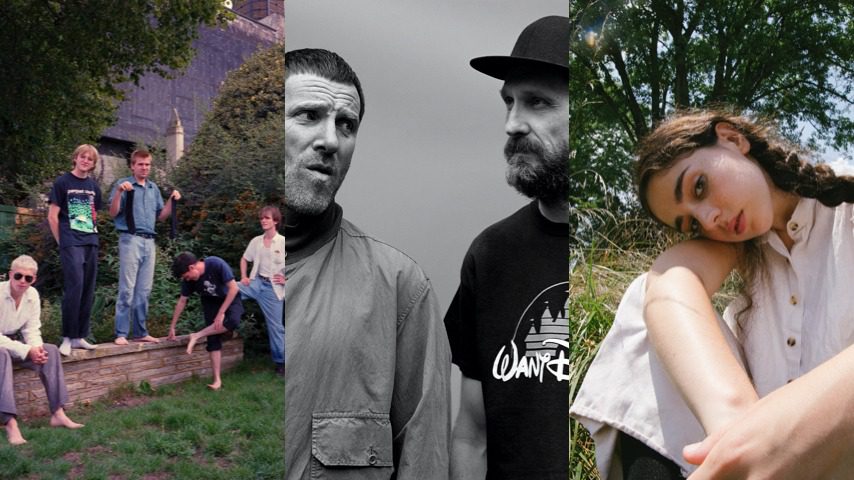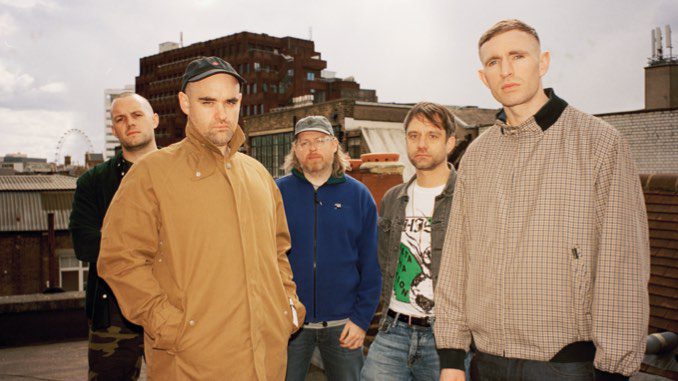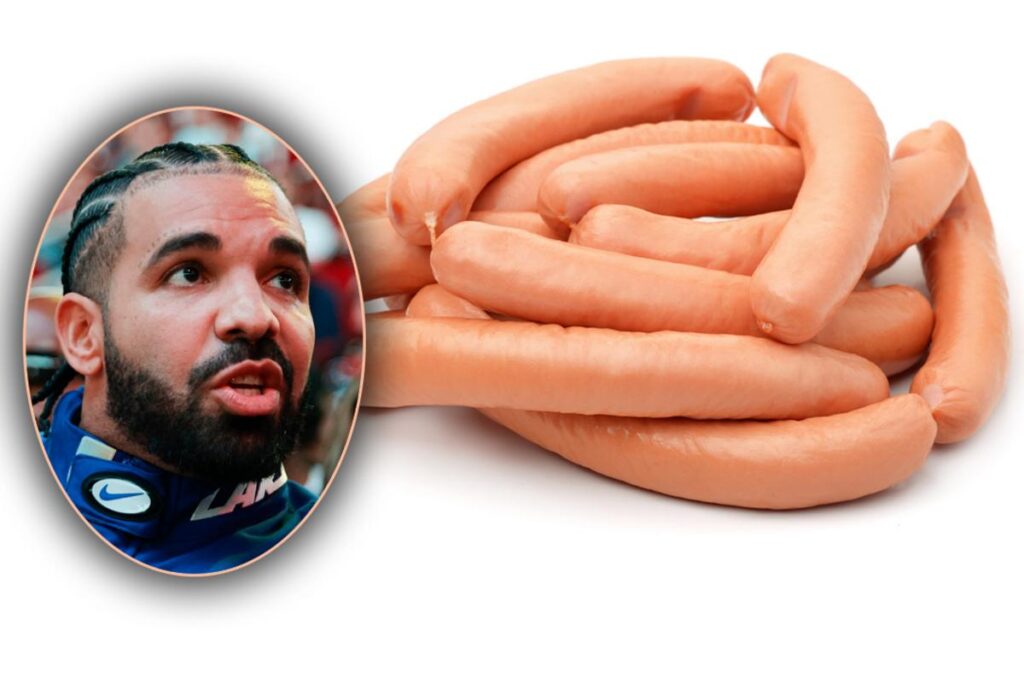Weeks before The Tragically Hip took their final bow with a historic farewell performance in August of 2016, Los Lobos saxophonist Steve Berlin was asked to “eulogize” the band for the Canadian publication Maclean’s. Berlin, who produced two of the Ontario quintet’s mid-career albums, offered that he couldn’t think of a U.S. act that’s struck as deep of a nerve in the American consciousness as The Hip did in their native Canada. Even Springsteen, Berlin mused, doesn’t work as a parallel. North of the border, meanwhile, Canadian giants like Neil Young and Rush haven’t resonated in quite the same way, either. In fact, Rush’s manager once said as much to Tragically Hip drummer Johnny Fay.
Fittingly, the band’s last show was broadcast across Canada. Estimated to have been viewed by over a quarter of the country’s population, the concert left audiences in tears from Vancouver to Newfoundland. And when frontman Gord Downie died of brain cancer the following year, it made perfect sense that prime minister Justin Trudeau issued a statement and wept on national TV, saying, “We are less as a country [in Downie’s absence].” As Trudeau and so many others have noted, Downie had a remarkable way of incorporating Canadian geography and history in his lyrics, re-casting them as modern myths that transcended the scope of pop music, yet integrated seamlessly with the fabric of Canadian pop culture.
Downie referenced Stateside landmarks and people, too, though fewer of us down here noticed. It’s been endlessly documented—even by the band—that The Tragically Hip never rose very far above cult status in the States. They were able to establish Los Angeles, however, as one of their American strongholds, one of the few U.S. cities they could book for multiple nights. Live at the Roxy documents an appearance at the famed West Hollywood club in the spring of 1991, when The Hip were touring behind their sophomore full-length, Road Apples. Judging from their fiery performance that night, they had every reason to believe they had a shot at conquering not just the USA, but the world.
Conversely, the gritty bar band that rolled into West Hollywood on May 3, 1991, had no reason to think they would ever in a million years end up on a future prime minister’s radar. At that point, though they had already scored hits in Canada, The Hip were still upstarts in both countries, and it shows. Live at the Roxy, initially released last year as a bonus disc on the deluxe reissue of Road Apples, was recorded for a Westwood One radio broadcast that’s floated around in truncated form as a bootleg for decades. The broadcast omitted certain songs, but anyone who didn’t want to buy Road Apples twice can now own the whole show, a fascinating snapshot of a band going for broke.
Brimming with piss and vinegar, Live at the Roxy falls into that sweet spot in a band’s arc when they’re still hungry, but their live act is airtight from countless hours spent scratching and clawing in half-empty dives. By the time The Tragically Hip ever reached the U.S. interior, they had criss-crossed the breadth of Canada in a van during winter—a sign of their commitment. Their sense of mission is palpable on Live at the Roxy. Moreover, as bassist Gord Sinclair explains via press release, they had played the Road Apples material live for a year prior to even recording the studio versions. So what we hear on Live at the Roxy is a balance of professionalism and attitude that inevitably eludes bands as they mature.
Uptempo opener “Little Bones” epitomizes the Stones-influenced interplay between guitarists Paul Langlois and Rob Baker, while the rhythm section straddles the boundary between meat-and-potatoes classic rock and the ‘80s underground ethos of acts like R.E.M. It would be a stretch to say that The Tragically Hip showed traces of punk, but here they sustain an aggressiveness that they would grow out of almost immediately after this period. And though they vary the tempo and mood quite effectively—shifting ever so smoothly from the rubbery groove of “Twist My Arm” to the 18-wheeler rumble of “Highway Girl” and the solemn blues rock of “Cordelia,” etc.—The Hip deliver with the uniformity of tone and purpose that one goes to shows hoping to witness.
Starting with 1992’s Fully, Completely and continuing with the mid-’90s efforts Day for Night and Trouble at the Henhouse, The Tragically Hip grew more mood-focused, arty and eclectic over time. Inevitably, their setlists started to zigzag, sometimes erratically. And the refined, arena-ready outfit captured on their first official live album, 1997’s Live Between Us, sounds like an almost completely different band than the one that burned through some of those same songs within the smaller confines of The Roxy. Likewise, Downie comes across less as the national-treasure poet laureate he’s remembered as and more as an unhinged, hyper-literate person with a disturbed imagination and a precarious grip on reality.
For better or worse, The Hip were always defined by the incongruity between Downie’s professorial wordplay and the muscular, anthemic rock brawn the band tried to marshall behind him. Even in interviews, Downie possessed an elliptical train of thought that could be difficult to keep up with. Onstage, his mind would rifle through a breathtaking array of images at a computer processor’s speed—often rhyming in the process while keeping tongue in cheek. Before “Cordelia,” for example, he introduces Langlois as “the Kurosawa of the guitar,” which paves the way for him to talk about Kurosawa’s epic film Ran, King Lear and King Lear’s daughters, insisting that Cordelia was his fourth (not his third, as Shakespeare wrote).
During one of his legendary mid-song spoken rants, Downie cites Joseph Campbell, buddhist philosophy and Val Kilmer in a single breath. In another, he ad-libs an unsettling yarn about a man and a love interest who engage in murder, body disposal and suicide pact by shotgun—ending on a surprisingly lighthearted Ry Cooder reference that would later work its way into the verse of another song. And then there’s the similarly gory killer-whale stage rap. We Americans, alas, have never been prone to celebrating subtlety en masse. So it makes sense that Downie died occupying a space somewhere between fellow alternative-era eccentrics like Wayne Coyne and David Yow—or, perhaps, as the ancestor of a group like The Decemberists.
One of the unsung benefits, however, of the disparity between The Hip’s reception in the U.S. versus Canada was that Stateside fans could always view them as a band they needed to champion, no matter how big their budget got or how comfortable they started to sound. On the night they played The Roxy, though, there was no guarantee they’d even make it that far. Live at the Roxy provides the perfect counterpoint to Between Us: Where the latter showcases the full scope of their creative ambitions, the Roxy set courses with the undeniable vitality of a band playing like tomorrow wasn’t guaranteed—a side of The Tragically Hip that’s easy to overlook in light of their later accomplishments. In a word: essential.
Saby Reyes-Kulkarni is a longtime contributor at Paste. He believes that a music journalist’s job is to guide readers to their own impressions of the music. You can find him on Twitter and Substack at feedbackdef.substack.com
Hear a 1999 Tragically Hip performance from the Paste archives below.




